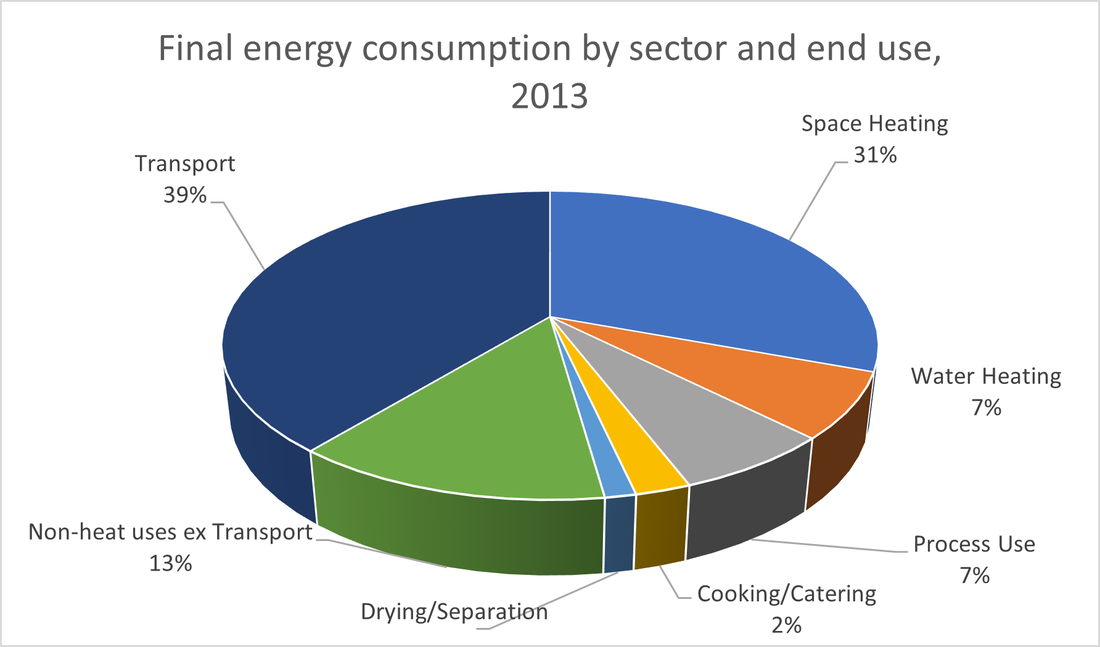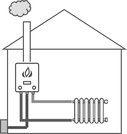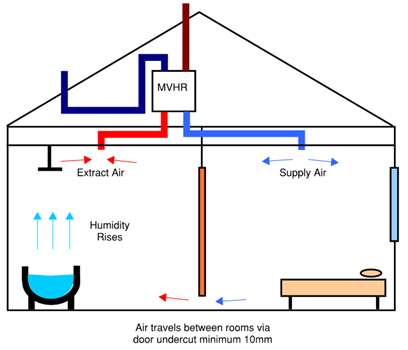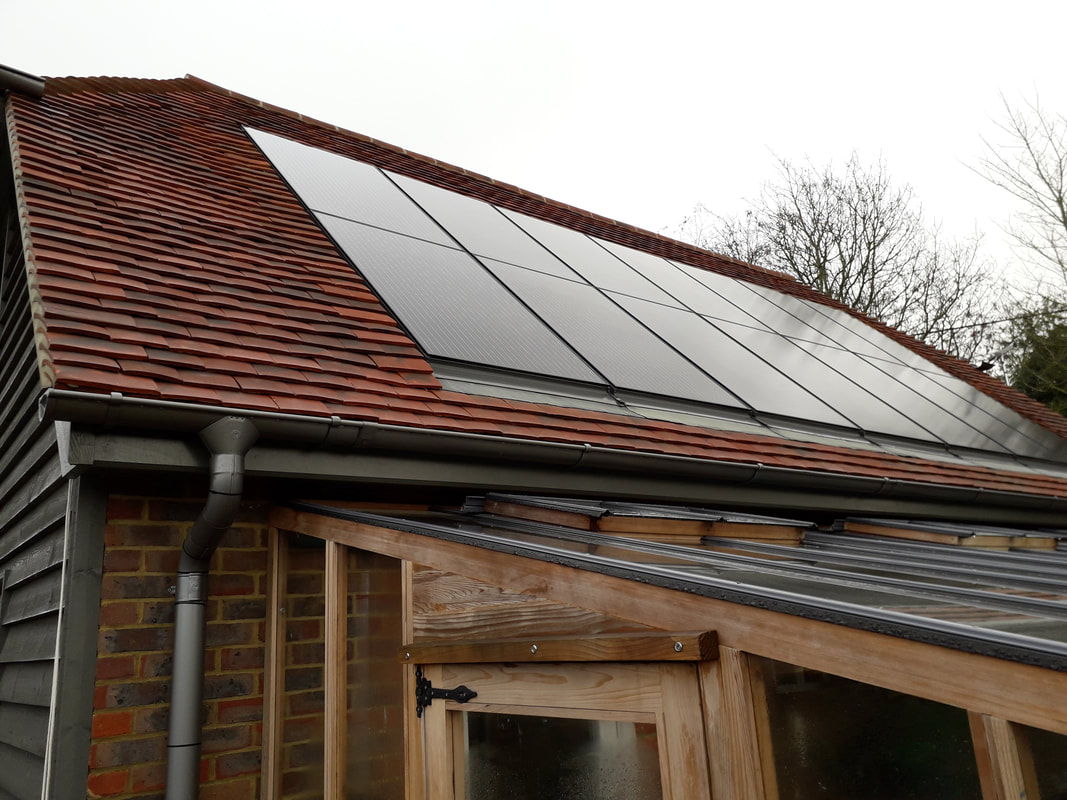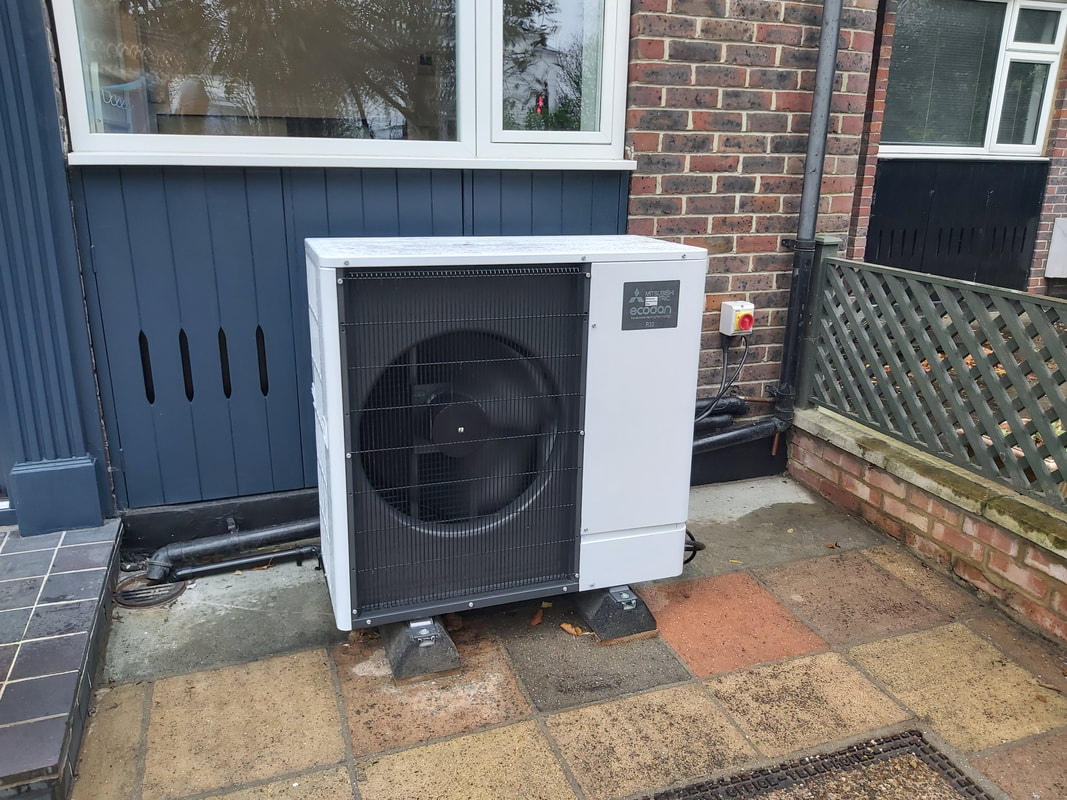31% of UK energy consumption is for space heating (2013) [1]
What is the next step to reduce our carbon emissions from heating?
A variety of solutions can work together to reduce heating energy consumption in domestic homes
Insulation and AirtightnessThe amount of energy which can be saved by insulating will depend on the a range of factors:
Performance Gap Many houses do not achieve their calculated savings in practise. The passivhaus approach can help to reduce this [2]. |
Mechanical Ventilation with Heat RecoveryA ventilation system with heat recovery provides fresh air close to room temperature so that windows can be closed during the heating season.
|
Solar PVSolar Panels can generate low carbon electricity and reduce running consumption. They work best with the following:
- Adequate roof space - South, east or west facing roof - Very little or no shading from trees or obstructions Seasonal Mismatch Solar energy peaks in the summer but electricity consumption peaks during the winter. Excess electricity can be exported to the grid. |
Air Source Heat PumpSince 2007 installed wind power capacity in the UK has grown from 2 GW to 21.7 GW in 2018[3]. This huge growth in renewable energy together has dramatically changed the carbon intensity of grid electricity.
This means that using electricity for space heating is now an increasingly low carbon option and technologies like heat pumps can offer huge carbon savings compared to a gas boiler. An air source heat pump can replace a gas boiler providing space heating via a wet central heating system and hot water with a stored hot water cylinder. |
[1] https://assets.publishing.service.gov.uk/government/uploads/system/uploads/attachment_data/file/386858/Estimates_of_heat_use.pdf
[2] https://www.passivhaustrust.org.uk/UserFiles/File/Technical%20Papers/2020%2006_Passivhaus%20and%20the%20Performance%20Gap_University%20of%20Bath_Rachel%20Mitchell%20and%20Sukumar%20Natarajan.pdf
[3] https://www.gov.uk/government/statistics/regional-renewable-statistics. Regional Statistics 2003-2018: Installed Capacity
[2] https://www.passivhaustrust.org.uk/UserFiles/File/Technical%20Papers/2020%2006_Passivhaus%20and%20the%20Performance%20Gap_University%20of%20Bath_Rachel%20Mitchell%20and%20Sukumar%20Natarajan.pdf
[3] https://www.gov.uk/government/statistics/regional-renewable-statistics. Regional Statistics 2003-2018: Installed Capacity
